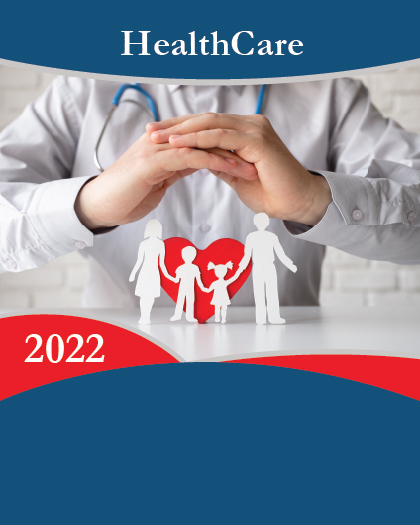
The Global Remote Patient Monitoring Market size was $703 million in 2015 and is expected to grow at a CAGR of 17.0% to reach $2,130 million by 2022. Remote patient monitoring (RPM) is a technology used to collect medical and health-related data from individuals at one location and electronically transmit it to a healthcare provider at another location. RPM is used to remotely monitor and analyze physiological parameters such as blood oxygen levels, vital signs, blood pressure, heart rate, and blood sugar, which improves the quality of care, quality of life, and allows early prediction of aggravations and exacerbations. This reduces the number of emergency department visits, and duration of hospitalization. This is attributed to the large undiagnosed patient population, improving access to healthcare systems, and a high risk of developing chronic disease due to rapid urbanization. In addition, the increase in incidences of chronic diseases, such as diabetes and COPD, are responsible for the high growth rate.
Chronic heart diseases, diabetes, and chronic respiratory diseases are the leading cause of mortality and morbidity in the world. Chronic care management accounts for 75% of the healthcare costs. The increase in prevalence of chronic conditions places an enormous financial burden on the caregivers. Here, RPM technologies comes into role play and identifies small changes in the patient's physiological data and promote self-monitoring. Thus, it reduces the readmissions and prevents avoidable hospitalizations. Moreover, these technologies decrease a number of unnecessary trips to the doctor's office and reduce travel-related expenses that are necessary to receive quality medical care. On the short- and long-term basis, by proper implementation, RPM technologies can expand access to quality healthcare, and save time and money.
According to WHO, the leading causes of deaths in 2012 were: cardiovascular diseases, respiratory diseases, including asthma and chronic obstructive pulmonary disease, and diabetes. These are the major four non-communicable diseases (NCDs) which were responsible for 82% of the deaths worldwide. Remote health monitoring technologies focus on serious, chronic conditions, such as congestive heart failure (CHF), pulmonary fibrosis, and diabetes, as they tend to result in repeated hospitalization.
The report covers the analysis of remote patient monitoring devices market based on conditions, components, and geography. Based on the conditions, the market is categorized into congestive heart failure (CHF), diabetes, chronic obstructive pulmonary disease (COPD), blood pressure, mental health, and others. Based on components, the market is divided into two segments devices and software. Based on geography, the remote patient monitoring industry is studied with respect to four major regions - North America (U.S., Canada, and Mexico); Europe (Germany, France, U.K., Italy, Spain, and Russia); Asia-Pacific (Japan, China, India, Australia, South Korea, and Taiwan); and LAMEA (Brazil, Turkey, Venezuela, Saudi Arabia, and Republic of South Africa). The report includes the revenue generated from the sales of these categories.
Global leaders, such as Boston Scientific Corporation, Nihon Kohden, Medtronic Inc., Johnson & Johnson, and Omron Healthcare, have adopted collaboration as a strategy for the growth in the RPM market. For instance, Medtronic collaborated with Qualcomm in May 2016 to improve the health outcomes for diabetic patients. The aim of this collaboration was to jointly develop future generation continuous glucose monitoring systems that are affordable and easy-to-use. This can be achieved owing to Medtronics market-leadership in diabetes management and Qualcomm Lifes expertise to develop reference designs for wireless and small integrated modules.
On July 27, 2016, Boston Scientific completed the acquisition of Cosman Medical, Inc. This acquisition helped Boston Scientific expand their product portfolio and provide more options for patients with chronic diseases.
The key players profiled in this report include Aerotel Medical Systems (1988) Ltd., Biotronik SE & Co. KG, Boston Scientific Corporation, General Electric Company, Nihon Kohden Corporation, Medtornic Plc, Masimo Corporation, Abbott Laboratories, Johnson and Johnson and Omron Corporation. Other players in the RPM market include A&D Company, Limited, Aipermon GmbH & Co. KG, Jawbone, Docobo Ltd., Microlife Corporation, Schiller AG, SHL Telemedicine, and Sorin Group.
The market would gain traction in the developing regions of Asia-Pacific, Africa, and Latin America. The large undiagnosed patient population, rapid urbanization, rise in disposable incomes, improved government funding towards healthcare, and growth in awareness about RPM technologies are key factors that constitute the steady market growth in these regions. However, there would be pressing concerns related to the cost of technologies, especially in third-world countries and in the developing countries, such as India and China.
The Russian remote patient monitoring industry is projected to grow at a high CAGR of 19.3% during the forecast period. The major factors, such as lack of awareness and issues pertaining to price constraints, restrain the growth of RPM market in this region. However, the presence of untapped market would boost the growth of the market. Also, the increase in focus of the RPM vendors on the emerging markets (such as APAC and LAMEA nations) is primarily set to contribute towards the growth of the market.
KEY BENEFITS
The global remote patient monitoring report provides an extensive analysis the current trends and highlighting the market potential from 2014 to 2022, in terms of value.
The market scenario is comprehensively analyzed with respect to the conditions and components.
Comprehensive analysis of the patents and clinical trials is provided to determine the prevailing opportunities.
Recent developments, key manufacturers, and the global remote patient monitoring market shares are listed in this report to analyze the competitive scenario of the market.
In-depth analysis of the market based on geography gives an understanding of the regional market, which assists in strategic business planning.
REMOTE PATIENT MONITORING MARKET KEY SEGMENTS:
The global remote patient monitoring market segmentation is illustrated as follows:
By Condition
Congestive Heart Failure (CHF)
Diabetes
Chronic Obstructive Pulmonary Disease (COPD)
Blood Pressure
Mental Health
Others
By Component
Devices
Software
By Geography
North America
U.S.
Canada
Mexico
Europe
Germany
U.K.
France
Italy
Spain
Russia
Rest of Europe
Asia-Pacific
Japan
China
India
Australia
South Korea
Taiwan
Rest of Asia-Pacific
LAMEA
Brazil
Turkey
Venezuela
Saudi Arabia
Republic of South Africa
Rest of LAMEA
























